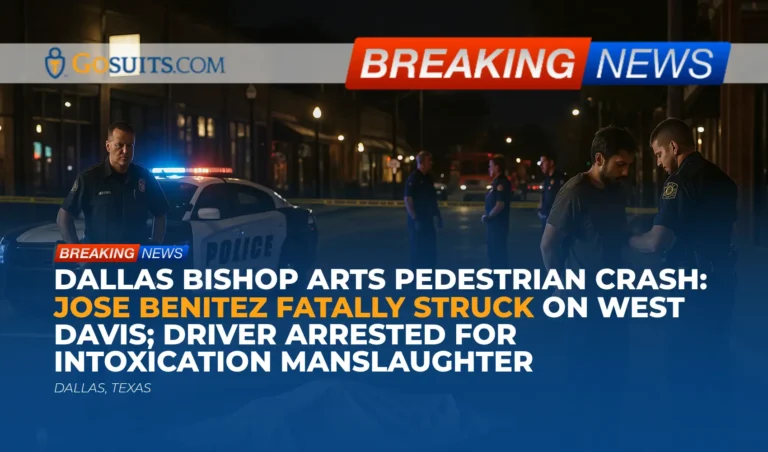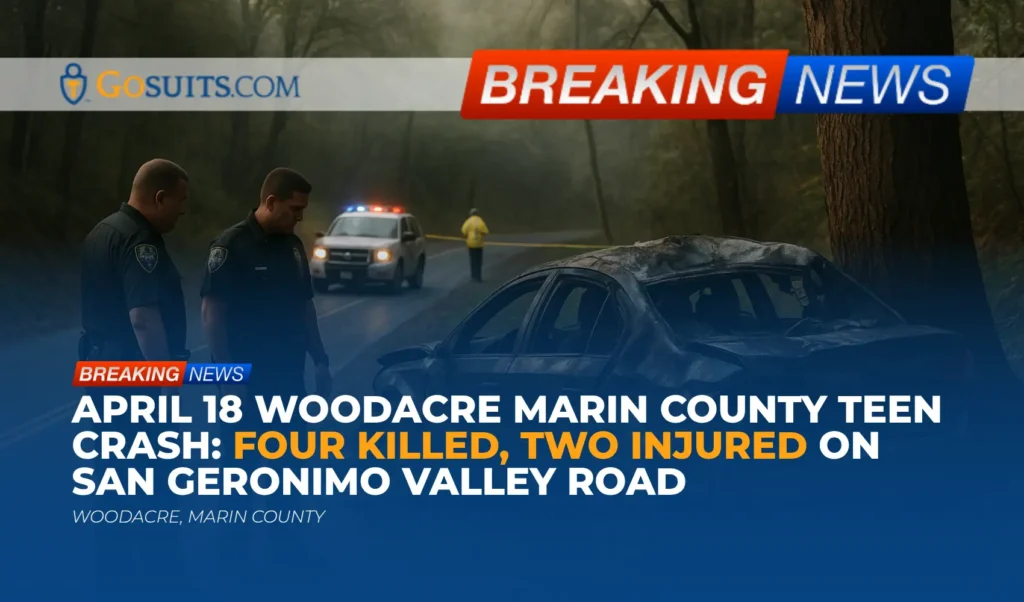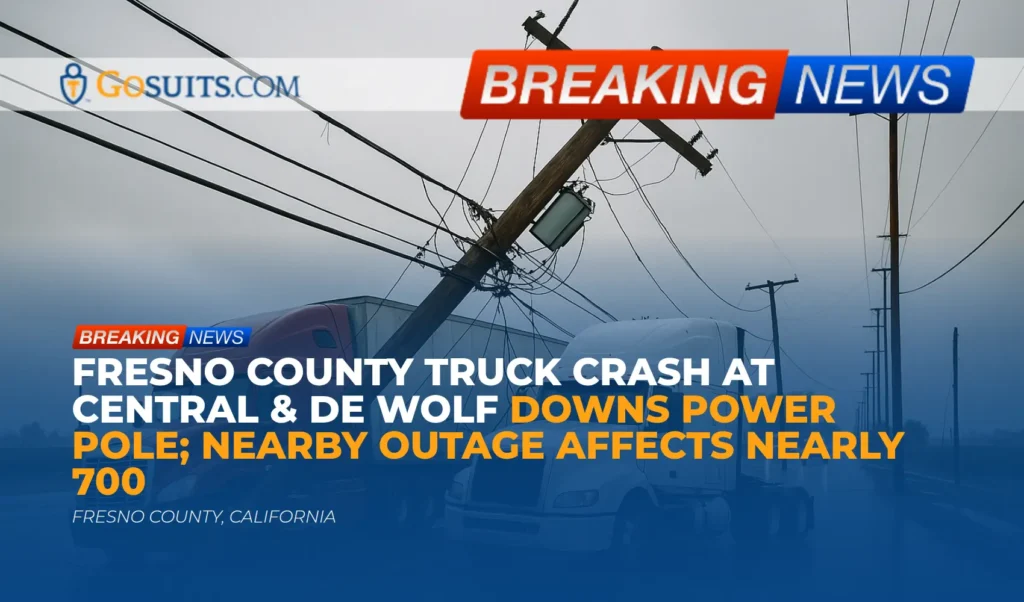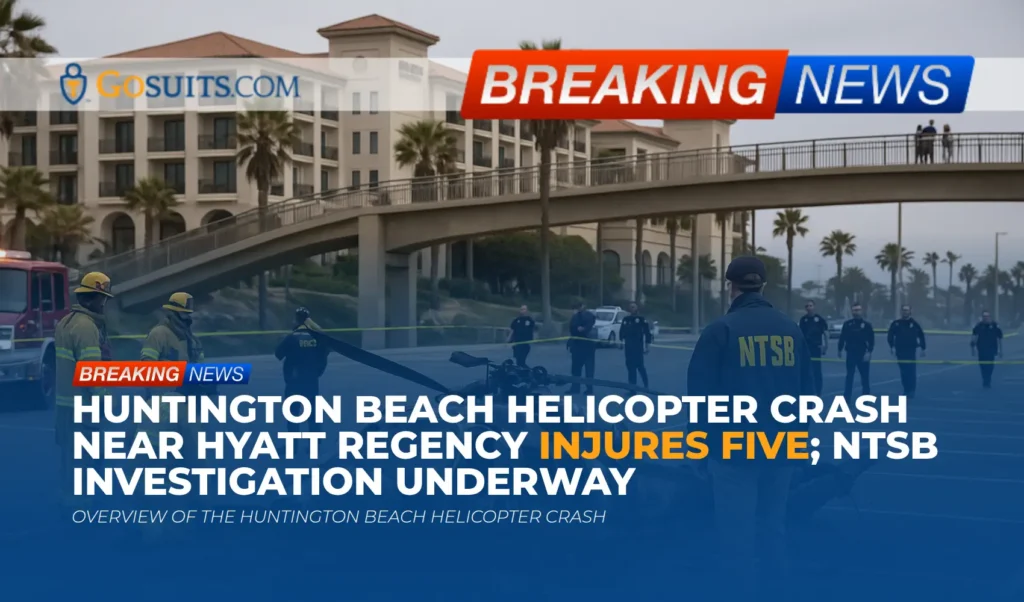- What is known about the Bishop Arts pedestrian crash
- Location context and community safety concerns
- Texas law: wrongful death and survival claims
- Potential civil liability after a suspected intoxicated driving crash
- Insurance issues families commonly face
- Time limits and notice requirements in Texas
- Evidence to preserve immediately
- How and where to obtain official records and documents
- Pedestrian safety data and why speed and impairment matter
- State resources that may help with immediate needs
- Why to speak with an attorney before contacting any insurance company
- Commentary from Gosuits Dallas, Texas Personal Injury Attorney
- Why prompt action matters
What is known about the Bishop Arts pedestrian crash
According to information shared by Dallas police and local reporting, a pedestrian was struck while walking across West Davis Street in Dallas’ Bishop Arts District at approximately 10:30 p.m. on Sunday. The victim, identified publicly as Jose Benitez, a security guard, was hit near the 400–500 block of West Davis Street. Witnesses ran to help, and fire and EMS arrived quickly, but Mr. Benitez did not survive. A memorial with candles and crosses was placed outside a nearby restaurant. Dallas police stated that the driver, identified as a 29-year-old man, was arrested and booked on a charge of intoxication manslaughter.
This article focuses on the civil law and safety implications of a fatal pedestrian crash in a mixed-use corridor, including family rights, steps to preserve evidence, and how to request official records. We are mindful this is a devastating loss for loved ones and for the community that knew Mr. Benitez.
Location context and community safety concerns
The Bishop Arts District is a busy, walkable commercial area where people frequently cross between restaurants, shops, and parking areas. Nearby business owners reported that speeding and dangerous driving have been concerns along the same stretch of West Davis Street, and there were multiple serious crashes reported in recent months. In such corridors, a combination of nighttime conditions, vehicle speed, visibility, driver impairment, and pedestrian activity may all influence crash risk.
Texas transportation safety guidance emphasizes that drivers must exercise due care to avoid colliding with pedestrians, regardless of whether a pedestrian is in a marked crosswalk, and that lower speeds significantly reduce the severity of pedestrian injuries. Texas statutes require drivers to yield the right of way to pedestrians within crosswalks under certain conditions and to exercise due care at all times. See Texas Transportation Code sections on pedestrian rights and driver duties, including the duty to exercise due care toward pedestrians and to yield in crosswalks when applicable (Transportation Code Chapter 552).
Texas law: wrongful death and survival claims
Who can bring a wrongful death claim
Under Texas law, certain family members may bring a wrongful death civil claim when a person’s death is caused by the wrongful act, neglect, carelessness, unskillfulness, or default of another. The Texas Wrongful Death Act authorizes the decedent’s surviving spouse, children, and parents to file. If those family members do not file within a statutory time, the executor or administrator of the estate may file for their benefit. See the Texas Civil Practice and Remedies Code (Chapter 71).
What a survival claim is
A survival claim is brought by the estate to recover damages the decedent could have pursued had they survived, such as medical expenses and pain experienced between injury and death. This claim is distinct from wrongful death and is authorized by the Texas Survival Statute (Section 71.021, within Chapter 71).
Relationship to criminal proceedings
A criminal charge, such as intoxication manslaughter, is separate from the civil process. A civil wrongful death claim does not require a criminal conviction and may proceed on its own timeline. Evidence from the criminal investigation can be important in the civil context, but families should be cautious about relying on timelines or outcomes in the criminal case to protect civil rights.
Potential civil liability after a suspected intoxicated driving crash
Driver liability
When a driver negligently or wrongfully causes a fatal crash, they can be held civilly responsible for damages under Texas law. Intoxication is a significant factor in establishing negligence, but civil cases still rest on evidence of duty, breach, causation, and damages.
Dram shop liability
Texas law may impose liability on an alcohol provider that over-served an obviously intoxicated person who then caused a crash, if specific statutory criteria are met. This is often called “dram shop” liability and is governed by the Texas Alcoholic Beverage Code (Chapter 2). Proving such a claim requires prompt investigation to determine where the driver obtained alcohol and what signs of visible intoxication were present at the time of service.
Exemplary damages
Exemplary damages may be available in Texas when the claimant shows by clear and convincing evidence that harm resulted from fraud, malice, or gross negligence. This is a high standard and is addressed in the Texas Civil Practice and Remedies Code (Chapter 41). Whether such damages apply in a particular case depends on the facts and evidence.
Roadway design and signage
Families sometimes ask whether a city’s roadway design contributed to a crash. Claims against governmental entities are tightly controlled by the Texas Tort Claims Act, including notice and immunity provisions. Evaluating a claim against a governmental unit requires careful factual and legal review. See the Texas Tort Claims Act notice provision (Section 101.101).
Insurance issues families commonly face
Insurance coverage often determines what funds are available to pay claims after a fatal crash. In Texas, potential sources can include:
- At-fault driver’s liability insurance for wrongful death and survival damages, up to policy limits.
- Uninsured/Underinsured Motorist (UM/UIM) coverage on the decedent’s or a household policy, if applicable, when the at-fault driver lacks adequate coverage.
- Personal Injury Protection (PIP) or Medical Payments coverage, which may provide limited medical or funeral benefits regardless of fault, depending on the policy.
- Dram shop coverage if an alcohol vendor is liable and insured.
Insurers often seek statements early. It is prudent to consult with a qualified attorney first. What is said to any insurance adjuster can be recorded, interpreted against the claim, and used to limit recovery later.

Time limits and notice requirements in Texas
- Statute of limitations: In Texas, most wrongful death and survival claims generally must be filed within two years of the date of death. See (Section 16.003(b)). Specific facts can affect the calculation, so evaluating the timeline early is important.
- Notice to governmental units: If a claim may involve a governmental entity, a written notice describing the damage or injury, time and place, and incident must typically be provided within six months of the incident, absent a city charter requiring a shorter period. See (Section 101.101).
- Insurance notice deadlines: Policies may contain prompt notice and proof-of-loss requirements; delays can affect coverage.
Evidence to preserve immediately
In serious and fatal crash cases, crucial evidence can disappear within days. Steps that can make a difference include:
- Preserve video: Nearby businesses, buses, rideshare vehicles, and residences may have surveillance video that overwrites within 24–72 hours. Prompt requests or preservation letters are key.
- Secure witness information: Names, phone numbers, and recorded recollections while memories are fresh.
- Document the scene: Photos of lighting, sightlines, skid or yaw marks, debris, and crosswalk markings; measure or note distances and obstructions.
- Obtain dispatch and 911 records: Computer-aided dispatch (CAD) logs and 911 audio can establish timelines and observations.
- Track medical and funeral bills: Keep organized copies of all invoices, receipts, and communications.
- Preserve the involved vehicle: If possible, request that the at-fault vehicle be preserved for inspection of damage patterns, event data recorder information, and airbags.
- Request toxicology records: Toxicology results for the driver may be pending for weeks; calendar follow-ups.
Because some evidence requires formal legal process to obtain, families often authorize a representative to send preservation letters immediately.
How and where to obtain official records and documents
Police crash report
In Texas, the official crash report is maintained by the Texas Department of Transportation (TxDOT). Authorized parties may request it through the state system. TxDOT provides information on crash reports on its website (txdot.gov); eligibility to obtain reports is governed by state law.
911 audio, CAD logs, and body/dash camera videos
Such records are typically held by the responding agency. In Dallas, families can submit an open records request under the Texas Public Information Act. Guidance on public records rights for members of the public is provided by the Texas Attorney General’s Office (Open Government: Members of the public) and the statute itself (Texas Government Code Chapter 552). Certain footage may be subject to statutory exceptions, and request wording matters.
Autopsy report and death certificate
- Autopsy report: In counties served by a medical examiner, autopsy and toxicology records may be available to next of kin when complete, subject to confidentiality provisions in state law.
- Death certificate: The Texas Department of State Health Services provides information on obtaining death records (DSHS Vital Statistics: Death records). Certified copies are often needed for insurance and estate matters.
Understanding pedestrian right-of-way law
Relevant sections of the Texas Transportation Code that may come up when reviewing a pedestrian crash include:
- Signals and crosswalks (§ 552.001, § 552.003): Rules for pedestrians at traffic control signals and driver yield requirements in crosswalks when applicable.
- Crossing at points other than crosswalks (§ 552.005): Pedestrian duties at locations without crosswalks.
- Driver duty of due care (§ 552.008): Drivers must exercise due care to avoid colliding with a pedestrian and take proper precaution upon observing a child or a confused or incapacitated person.
These provisions help frame how investigators and insurers evaluate fault and responsibility.
Pedestrian safety data and why speed and impairment matter
State and federal safety agencies consistently find that impairment and speed are major contributors to pedestrian fatalities.
- Texas pedestrian fatalities: TxDOT reports that pedestrian-involved deaths remain a significant proportion of roadway fatalities each year. The agency provides pedestrian safety resources and statewide data to highlight ongoing risks and prevention strategies (txdot.gov).
- National perspective: The National Highway Traffic Safety Administration explains that pedestrians are particularly vulnerable road users, and that speeding increases both the likelihood of a crash and its severity (NHTSA: Pedestrian Safety).
At lower vehicle speeds, drivers have more time to see and react, and crash forces are reduced. In mixed-use districts like Bishop Arts, the combination of nighttime activity and frequent crossing points makes safe speeds and sober driving essential.
State resources that may help with immediate needs
- Texas Crime Victims’ Compensation Program: The Texas Office of the Attorney General administers a program that may help eligible victims’ families with certain expenses such as funeral costs and counseling when a crime is involved, subject to program rules and limits. Information and eligibility are available through the Attorney General’s site (OAG Crime Victims’ Compensation).
- Public records guidance: For help understanding what information is public and how to request it under the Texas Public Information Act, see the Attorney General’s overview (Members of the public: what is public?).
- Death records: DSHS explains who may obtain certified death certificates and how to order them (DSHS Vital Statistics).
Why to speak with an attorney before contacting any insurance company
Insurance adjusters often reach out quickly after a fatal crash. Adjusters work for insurers, and their job is to limit payouts. Statements given in the first days, when facts are still developing and grief is acute, can be recorded and later used to challenge liability or damages. The safest approach is to consult a qualified personal injury attorney before giving any statement, signing forms, or accepting payments from any insurer. Free consultations are commonly available, and initial guidance can help protect rights from the outset.

Commentary from Gosuits Dallas, Texas Personal Injury Attorney
Our hearts go out to the family, friends, and coworkers mourning the loss of Mr. Benitez. A sudden death in a neighborhood gathering place leaves a deep ache in an entire community. This article is intended for general education and public information; it is not a substitute for guidance about any specific case.
Based on the information publicly reported by Dallas police, this appears to be a tragic pedestrian fatality with a driver arrested on suspicion of intoxication manslaughter. In civil law, impairment behind the wheel is a powerful sign of negligence, but a thorough investigation is still essential. That includes securing surveillance video from West Davis Street, collecting witness statements while memories are fresh, obtaining the official crash report and any reconstruction materials, and monitoring toxicology records as they are released. If alcohol service is part of the story, dram shop questions should be explored quickly before evidence disappears.
In our experience, insurers and large corporations often move fast after a catastrophic loss. They may request recorded statements, offer quick checks, or seek signed releases before the full extent of damages and liabilities is known. This can disadvantage families who are still in shock, unsure of next steps, and unfamiliar with how evidence and insurance coverage intersect. Understanding rights early and avoiding hasty decisions helps keep the playing field fair.
Obtaining a free consultation can be a practical way to get oriented without financial pressure. Speaking with a seasoned attorney before any insurance contact helps ensure that communication is accurate and protected, that evidence is preserved, and that all potential sources of recovery are properly evaluated, including UM/UIM coverage and any dram shop implications.
Why prompt action matters
When a fatal crash occurs in a busy corridor, time is not on the side of a thorough civil investigation. Surveillance footage is often overwritten within days, witnesses scatter, and vehicles may be repaired or salvaged before inspection. Meanwhile, insurers begin building their files immediately. These dynamics create urgency for a few concrete steps that can preserve options later:
- Preserve time-sensitive evidence: Request that nearby businesses and residents save relevant video; send written preservation notices for vehicle data; collect names and phone numbers for all witnesses.
- Secure official records: Request the TxDOT crash report when available, and initiate open records requests for 911 audio and CAD logs to establish an accurate timeline.
- Stay ahead of deadlines: Calendar the two-year limitations period and any governmental notice requirements. Missing a deadline can bar a claim even when liability appears clear.
- Protect coverage: Provide timely notice to all potentially applicable insurance policies while avoiding recorded statements until after consulting counsel.
- Organize documents: Keep medical records, funeral invoices, travel costs, and grief counseling receipts in one place to make future claims more straightforward.
These steps can help ensure that key facts are not lost and that decisions are made with a fuller picture of the law, the evidence, and the available coverage. Acting promptly often makes a measurable difference in the quality of the investigation and the options available down the road.
Non-linked action buttons
These buttons are provided as on-page prompts only and do not open links.
Preserve Evidence Checklist Request Official Records Understand Insurance Coverage Consult an Attorney Before Speaking to Insurers Track Deadlines and Notice Requirements






